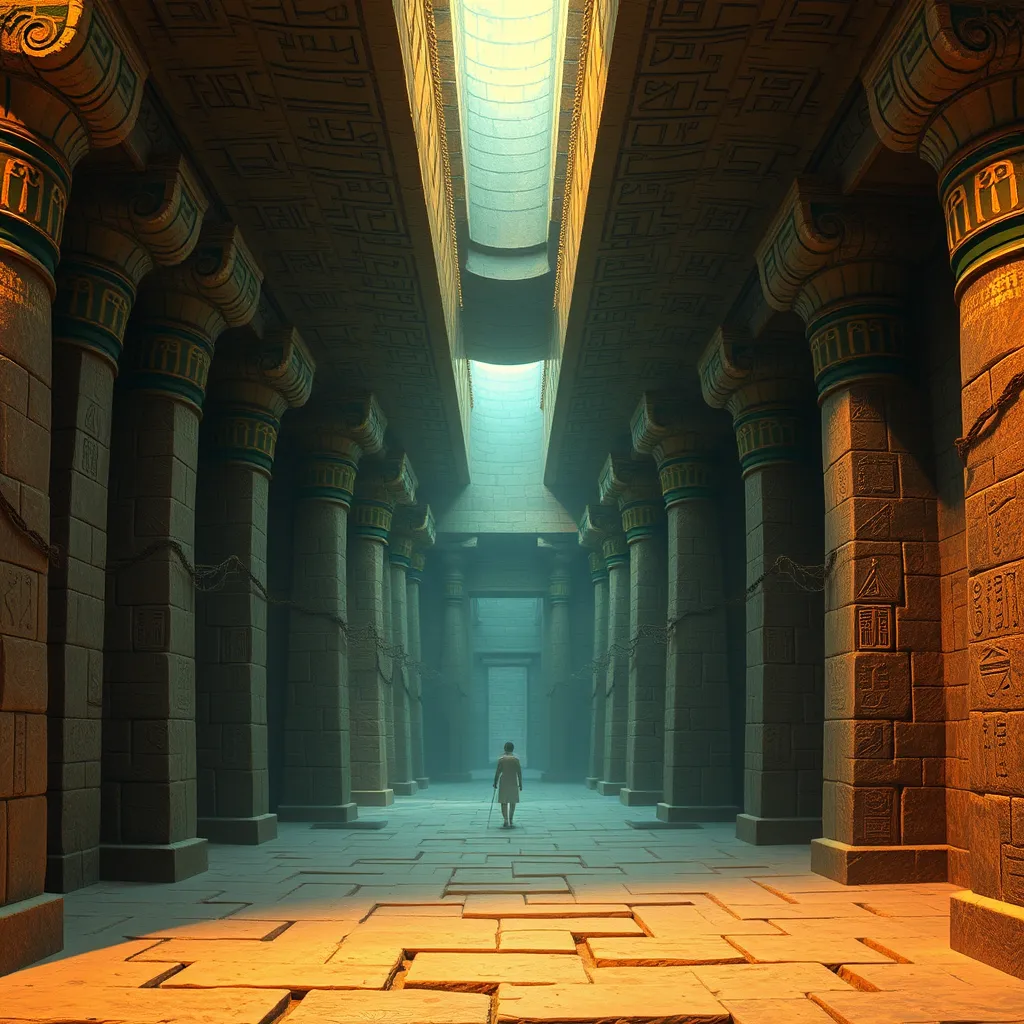The Duat: A Labyrinth of Trials and Triumphs
I. Introduction to the Duat
The Duat, a central element in ancient Egyptian mythology, represents the realm of the afterlife. This mystical land is not merely an extension of the physical world but a complex domain filled with challenges and opportunities for the deceased. The significance of the Duat lies in its portrayal of the journey that souls undertake following death, highlighting the moral and spiritual trials that define one’s passage to eternity.
In this article, we will explore the Duat’s intricate structure, the trials faced by souls within it, the deities that guide them, the rich symbolism it embodies, and the triumphs that can be achieved against adversity.
II. The Structure of the Duat
The Duat is often depicted as a sprawling labyrinth of landscapes that intertwine both physical and spiritual elements. It includes dark caverns, vast rivers, and lush fields, each representing different aspects of the afterlife journey.
- Physical Landscapes: The Duat features rivers of fire, marshes, and fields of reeds, symbolizing both danger and fertility.
- Spiritual Landscapes: These include the Hall of Judgment, where the deceased face their ultimate test, and the realm of Osiris, representing rebirth and resurrection.
Key regions within the Duat carry significant meanings:
- Field of Reeds: A paradise for the righteous, reminiscent of the Nile’s fertility.
- Hall of Two Truths: The place of judgment, where the heart is weighed against the feather of Ma’at.
The Duat serves as a crucial stage in the journey of the soul, where each region and trial reflects the individual’s moral integrity and readiness for eternal life.
III. The Trials of the Duat
The Duat is fraught with challenges that the deceased must face to prove their worthiness. These trials are not only physical but also moral, reflecting the ethical standards upheld by ancient Egyptian society.
- Weighing of the Heart: This is perhaps the most famous trial, where the heart of the deceased is weighed against the feather of Ma’at. A balanced scale signifies a life led in truth and righteousness, while an unbalanced scale indicates a life of sin.
- Serpent Challenges: Deceased souls often confront venomous serpents and other beasts that test their courage and resolve.
The significance of these trials lies in their reflection of moral integrity. They serve as a reminder of the importance of living a virtuous life, as the consequences in the Duat directly correlate with one’s earthly actions.
IV. Deities and Guardians of the Duat
Deities play a pivotal role in the Duat, providing guidance and protection to the souls navigating its treacherous landscapes. Key deities include:
- Osiris: The god of the afterlife, overseeing the judgment of souls and representing resurrection.
- Anubis: The god of embalming and the protector of the dead, guiding souls through the Duat.
- Ra: The sun god, whose journey through the underworld each night symbolizes rebirth.
These deities not only assist in navigating the Duat but also emphasize the importance of divine guidance in overcoming the trials faced by the deceased. Their presence offers hope and reassurance in the face of uncertainty.
V. Symbolism of the Duat
The Duat is rich in symbolism, with various elements conveying deeper meanings that enhance our understanding of life, death, and rebirth. Some significant symbols include:
- The Scarab: Represents transformation and renewal, embodying the cycle of life and death.
- The Lotus: Symbolizes purity and rebirth, often associated with the sun and creation.
These symbols reflect the personal and collective struggles faced by individuals in their quest for eternal life. They serve as reminders of the interconnectedness of life experiences and the potential for growth beyond death.
VI. Triumphs in the Duat
Despite the daunting challenges within the Duat, there are numerous stories of successful navigation and triumph over adversity. These narratives often highlight the ultimate goal of achieving eternal life and a harmonious union with the divine.
- Successful Judgment: Souls who pass the Weighing of the Heart are granted access to the Field of Reeds, a place of eternal bliss.
- Rebirth: The stories of Osiris’s resurrection serve as powerful symbols of hope and renewal for the deceased.
The cultural impact of these triumphs on ancient Egyptian society cannot be overstated. They instilled a sense of purpose and morality, encouraging individuals to lead lives of virtue in anticipation of the afterlife.
VII. The Duat in Modern Culture
The Duat continues to resonate in modern culture, inspiring references in literature, art, and popular media. Contemporary interpretations often explore themes of life, death, and the afterlife, reshaping our understanding of ancient beliefs.
- Literature: The Duat appears in various novels and plays, often symbolizing the journey of self-discovery and the confrontation of one’s inner demons.
- Art: Visual representations of the Duat, from hieroglyphics to modern artworks, explore its rich symbolism and complexity.
- Popular Media: Films and video games often incorporate elements of the Duat, showcasing its trials and deities in fantastical narratives.
These modern interpretations remind us of the enduring relevance of the Duat’s themes in discussions about life, death, and our collective human experience.
VIII. Conclusion
In summary, the Duat embodies a labyrinth of trials and triumphs that reflect the intricate beliefs of ancient Egyptian society regarding the afterlife. The challenges faced by souls, the guidance of deities, and the rich symbolism all serve to enrich our understanding of life, death, and the potential for rebirth.
The legacy of the Duat endures in human consciousness, offering insights into our own struggles and aspirations. As we navigate our lives, the themes of the Duat remain relevant, prompting reflection on our moral choices and the eternal quest for meaning beyond this life.





